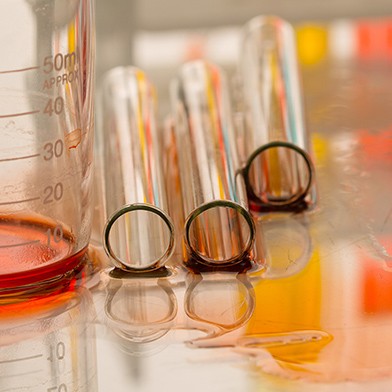The Simple Ways to Prevent Cell Culture Contamination
By Iva Fedorka
Sponsored by Corning
Nothing is more frustrating, expensive and potentially catastrophic to a cell culture lab than contamination. Every lab and lab worker has experienced it to some degree at one point or another. Significant time and effort may be spent nurturing a culture that ultimately is lost to contamination. Moreover, hidden contaminants can produce inaccurate, erroneous results that may damage a lab or researcher’s reputation. Cell culture contamination costs millions of dollars every year in the United States alone, and it seems to be only getting worse. While the problem will not and cannot ever be fully defeated, however, it can be fought.
Know the Contamination Sources
There are three main categories of cell culture contaminants: chemical contaminants, biological contaminants and cell-line or cross-contamination. Chemical contamination, often overlooked as a cause of cell growth problems, is caused by nonliving substances that produce unwanted effects on a culture system. These can include everything from media, sera, water and endotoxins to storage vessels, fluorescent lights and incubators. Avoiding chemical contamination can prove challenging because essential nutrients can become toxic at high concentrations and hormones and growth factors can change the culture in ways that, while not necessarily harmful, are unwanted.
Biological contaminants can be divided into those that are easy to detect and those that are more difficult to assess. Bacteria, molds and yeast are easy to detect, while viruses, protozoa, insects, mycoplasma and the presence of other cell lines are difficult to detect. These hard-to-detect contaminants pose the most serious threat to cultures because the amount of time that the contaminant goes undetected determines the extent of the damage.
Cell culture contamination costs millions of dollars every year in the United States alone, and it seems to be only getting worse.
Cross-contamination with cells from another species is also a clearly established problem, and one that has serious consequences. This problem became apparent in the late 1950s, and in 1967, isoenzyme analysis showed that HeLa cells had not only contaminated 20 commonly used human cell lines but completely replaced the original cells.
A few years later, in 1976, a research center tested 246 cell lines and found that 30% of them were incorrectly designated, and in 1981, a survey of cultures revealed that over 60 cell lines were actually HeLa cells. And this problem isn’t just limited to contamination from HeLa cells — DNA analysis has since revealed that cell lines have been contaminated by cells from a variety of sources.
There are a number of ways that these contaminants find their way into a culture. Some are from the use of nonsterile supplies, media and solutions. Others are airborne or can swim and crawl into a culture and begin to grow. And, of course, there will always be accidents or user errors to blame. But simply knowing the different types of contaminants and understanding how they can be introduced to a culture is the first step in fighting them.
An Ounce of Prevention
While awareness is key, a proactive approach to avoiding contamination will save you and your lab a lot of headaches. The first and easiest method is to keep your lab clean by using a disinfectant that is effective against bacterial spores. Wipe down work surfaces often and pay attention to frequently used equipment like incubators, laminar flow hoods, and water baths. Pay attention to areas that might be easily overlooked, such as the cooling coils on a freezer or refrigerator (which can be a major source of microbial-laden airborne particles).
Another key aspect of contamination prevention is using good aseptic technique. Laboratory workers should wear proper personal protective equipment (PPE), including gloves and lab coats at a minimum, and wash their hands when entering or leaving the lab. All sterile transfers should be performed inside a biosafety cabinet (BSC) or other appropriate enclosure that is cleaned and disinfected on at least a monthly basis. This protects workers and samples, and makes it more difficult for contaminants to enter samples. Clearly label cultures, solutions and supplies, and keep complete records of your work to help prevent accidents before they happen.
To avoid cross-contamination, obtain all your cell lines from reputable cell banks and periodically check the characteristics of your cell lines. You can also use DNA fingerprinting, karyotype analysis and isotype analysis to confirm the presence or absence of cross-contamination in your cultures.
Routinely monitor all of your supplies, media, solutions, work areas, and existing cell cultures for contamination before using them. Keep this routine simple enough to ensure that people use it, but thorough enough to catch any hint of chemical or biological contaminants.
There are three main categories of cell culture contaminants: chemical contaminants, biological contaminants and cell-line or cross-contamination.
If a culture does become contaminated, you have several options. Autoclaving is guaranteed to eliminate the infection and keep it from spreading to other cultures. If an irreplaceable sample becomes contaminated, antibiotics or other chemicals might save it, but that takes considerable effort, is rarely successful, and can lead to more problems in the future.
Although the contamination of cell cultures cannot be eliminated completely, it can be managed. With an effective prevention program, you can reduce the likelihood of cell culture contamination and the potential for damaging your reputation, too.

